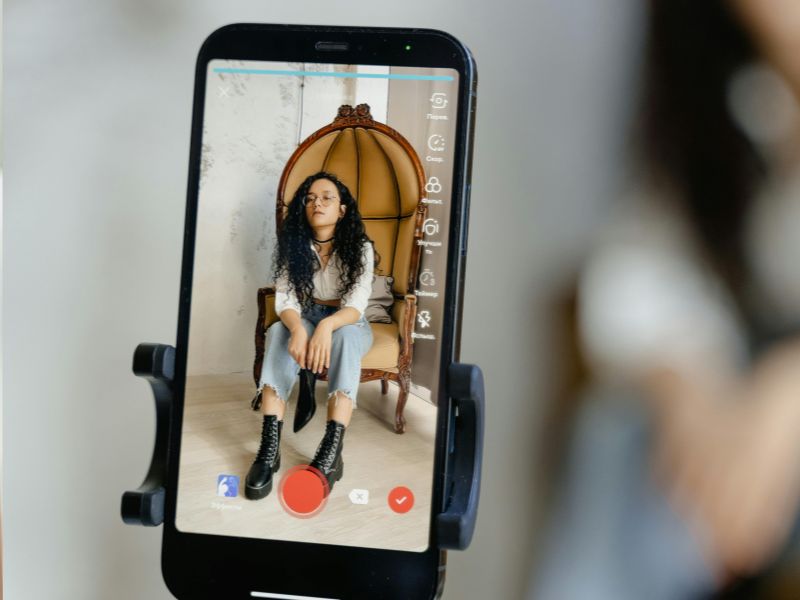
10 Steps to Branded Content Creation
How to build brand awareness, establish a positive brand image, and ultimately drive customer loyalty and sales with branded content creation.
Branded content creation is a strategic marketing approach that goes beyond traditional advertising. It’s a strategy where the brand integrates its messaging and identity into the content, often in a subtle or non-disruptive way, to engage and connect with consumers. The goal is to build brand awareness, establish a positive brand image, and ultimately drive customer loyalty and sales for the organization.
Why Branded Content Creation Matters for Organizations
Successful branded content not only promotes the brand but also builds a stronger and more authentic connection with the target audience, fostering brand loyalty and trust over time, ultimately contributing to their long-term success and growth. When an organization invests in producing branded content, it can have a significant impact on its overall marketing and business objectives.
1. Brand Awareness: Branded content helps increase brand visibility and recognition. By consistently creating and distributing content that aligns with the brand’s identity and values, organizations can make their presence known to a wider audience.
2. Brand Engagement: It fosters engagement with the target audience. When content is informative, entertaining, or emotionally resonant, it encourages people to interact with the brand and its messaging, whether through likes, shares, comments, or other forms of engagement.
3. Trust and Credibility: High-quality branded content can establish trust and credibility with consumers. When organizations provide valuable and reliable information through their content, they position themselves as authorities in their respective industries.
4. Customer Loyalty: Effective branded content helps build stronger relationships with existing customers. By consistently delivering content that meets their needs and interests, organizations can enhance customer loyalty and encourage repeat business.
5. Audience Education: Branded content can be used to educate consumers about a brand’s products or services. This is particularly important when dealing with complex or innovative offerings that require explanation or demonstration.
6. Differentiation: In competitive markets, branded content can help organizations stand out from the crowd. It allows them to showcase their unique value proposition and what sets them apart from competitors.
7. Emotional Connection: Branded content has the power to create emotional connections with consumers. When content tells compelling stories, evokes emotions, or aligns with shared values, it can leave a lasting impression and foster a deeper connection.
8. Lead Generation: Branded content can serve as a lead generation tool. By offering valuable resources, such as ebooks, webinars, or whitepapers, organizations can attract potential customers and capture their contact information for future marketing efforts.
9. Customer Acquisition: It can also help attract new customers. When content is shareable and reaches a broader audience, it has the potential to introduce the brand to new demographics and customer segments.
10. Data and Insights: Branded content campaigns can provide valuable data and insights into consumer behaviour and preferences. Organizations can use this data to refine their marketing strategies and tailor their content to better serve their audience.
11. Long-term Sustainability: Well-executed branded content can have a long-lasting impact. Unlike some forms of advertising that have short lifespans, high-quality content can continue to attract and engage audiences over time.
10 Steps to Branded Content Creation
Producing branded content involves several key steps to create compelling, relevant, and effective content that aligns with your brand’s objectives. Here is a general overview of how you can get started with branded content creation for your organization.
1. Define Your Objectives: Begin by clearly defining the goals and objectives of your branded content campaign. Are you aiming to increase brand awareness, drive sales, educate your audience, or achieve some other specific outcome?
2. Know Your Audience: Understand your target audience’s demographics, interests, preferences, and pain points. This research is crucial for creating content that resonates with your audience.
3. Set a Budget: Determine how much you can allocate to your branded content efforts. This budget will influence the types of content you can create and how you promote it.
4. Develop Your Brand Strategy: Ensure that your content aligns with your brand’s identity, values, and messaging. Your branded content should reinforce and enhance your brand image.
5. Choose Content Types and Formats: Decide on the types of content you want to create. Common formats include articles, videos, infographics, podcasts, webinars, and social media posts. Consider what will best convey your message to your target audience.
6. Content Creation: Produce the content based on your chosen format and ideas. This may involve writing, filming, designing, or recording, depending on the content type. Incorporate your brand elements, such as logos, colours, and messaging, into the content in a way that feels natural and enhances the content’s overall appeal.
7. Distribution Strategy: Determine how and where you will distribute your content. This may include your website, social media platforms, email marketing, partnerships with influencers or other websites, and paid advertising.
8. Promotion Plan: Create a plan for promoting your branded content. Consider using social media, email marketing, search engine optimization (SEO), paid advertising, and other promotional tactics to reach your target audience.
9. Measure and Analyze: Use analytics tools to track key performance metrics, such as views, engagement rates, click-through rates, conversions, and ROI. Assess whether your content is achieving its objectives.
10. Iterate and Evolve: Continuously iterate and evolve your branded content strategy based on feedback, changing audience preferences, and shifts in your brand’s goals and objectives.
Getting started with branded content creation requires careful planning, creativity, and a focus on delivering value to your audience. As you gain experience and refine your strategy, you can build a more effective and engaging branded content presence for your brand.




Leave a Reply
You must be logged in to post a comment.